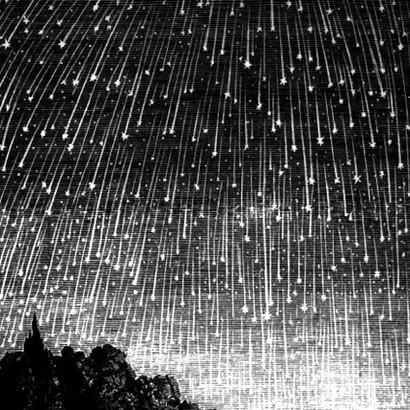Meteors
The Solar System is full of material left over from the formation of the planets. Small chunks of rock that travel through space are known as meteoroids. If they enter a planet’s atmosphere and burn up, they are then seen as meteors. Sometimes larger pieces of rock survive long enough to crash into a planet’s surface. Space rocks on the Earth’s surface are known as meteorites.
Meteors (often called “shooting stars”) are very common sights. Anyone who stares at a clear night sky will eventually see these brief trails of light. Meteors are caused by meteorites entering the upper atmosphere at speeds of around 15 km/s! Meteor trails usually last for less than a second. Friction with the thin air at an altitude of about 100 km causes meteorites to glow as they are heated and then destroyed.
Meteors can be seen at any time, but the best time to look for them is during periodic showers. Such showers appear around the same dates each year, when Earth passes through a stream of dust left behind by a passing comet.
There are about 20 main showers, although only a few of them produce as many as 50 meteors per minute. Occasionally, the sky is filled with shooting stars. The most famous “meteor storms” are linked with the Leonid shower, which takes place every year between 14 and 20 November. The shower has been so active in the past that it resembled falling snow!
Some meteors are too faint to be seen, even at night, but they can be detected by radar. Other planets have meteor showers too. On Mars, meteorites generally burn up in the thin atmosphere to produce meteors. However, there is no air on the Moon, so meteorites hit the ground and explode without burning up.
Last modified 12 April 2017





